 Technology peripherals
Technology peripherals
 AI
AI
 Manage demands and use large models to solve problems: the chart processing artifact SheetCopilot is online
Manage demands and use large models to solve problems: the chart processing artifact SheetCopilot is online
Manage demands and use large models to solve problems: the chart processing artifact SheetCopilot is online
This silky smooth operation process is simply good news for professionals!
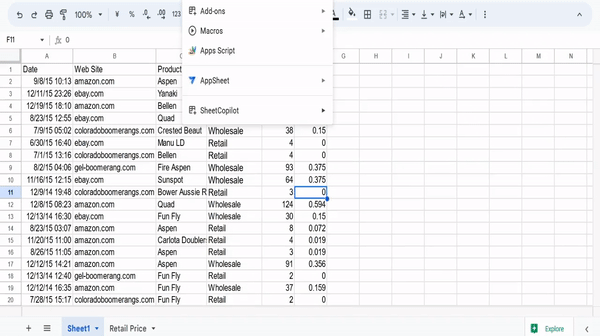
Recently, researchers from the Institute of Automation, Chinese Academy of Sciences, Hong Kong Polytechnic and other institutions have created a "Table AI Assistant" "SheetCopilot, this intelligent agent can generate solutions for manipulating tables based on user instructions and execute them on specific software (such as Excel, GoogleSheets, etc.). SheetCopilot can quickly connect to multiple table processing software, and supports multi-table operations, chart drawing and pivot table generation. It is expected to empower table data processing and visualization in multiple fields and take a key step towards realizing a generalist intelligent assistant.
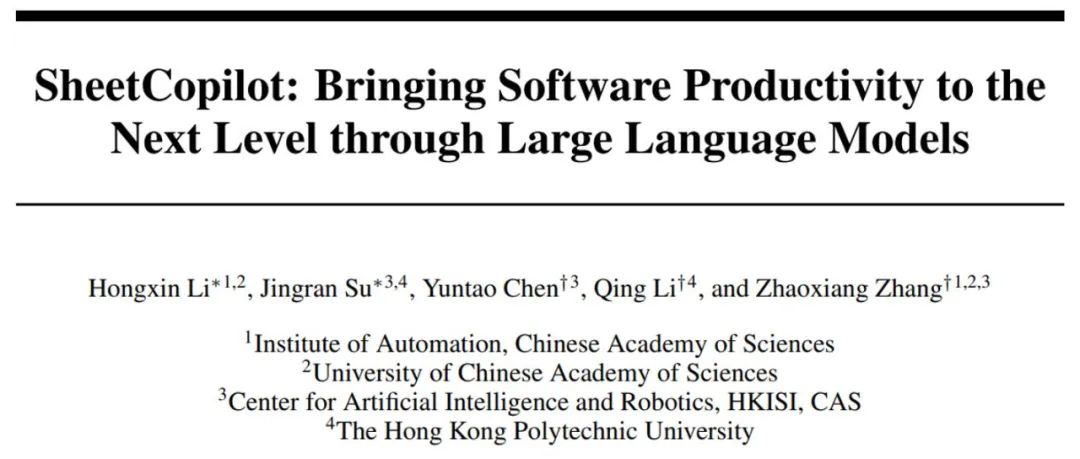
## Website: https://sheetcopilot-demo.github.io/
Paper: https://arxiv.org/abs/2305.19308
Let us first experience how SheetCopilot can significantly improve work efficiency through the following examples.
Suppose you are a newbie and one day your boss asks you to help him analyze sales data. When you get the form and look at it, you'll be dazzled by the thousands of rows of data. You don't know where to start, so you check it as you go.
First, you try to extract the name of each Product, and then use a formula to sum the income of each Product.

After working on it for more than 20 minutes, SUMIF kept reporting "#NAME?" errors, so I gave up.
I continued to search online and found that there is such a convenient tool as a Pivot table, so I started the second challenge.

It took more than twenty minutes to finally get it done. The whole process took nearly an hour, and the efficiency was not satisfactory. Every time your boss gives you a new form processing task, your previous experience is of little use, so you can only view the website and process it from scratch.
Your colleagues use SheetCopilot and can complete all kinds of strange requirements in just a few seconds :).
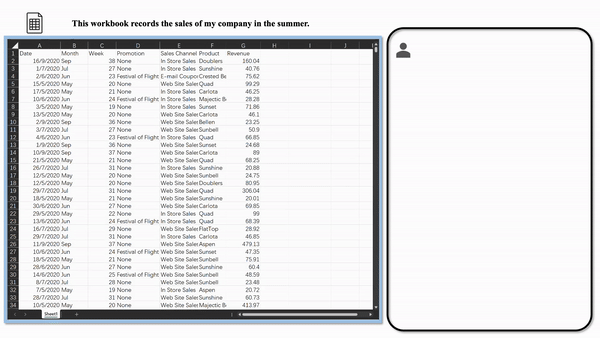
Seeing that SheetCopilot is so smooth, you gave it a try and it was easy to draw a picture.
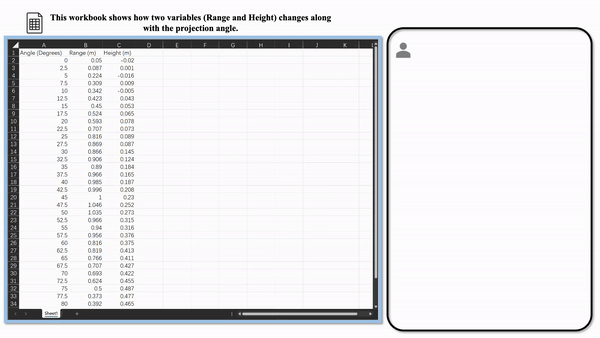
With SheetCopilot, you no longer need to slide the mouse across half the table to select data that exceeds the screen. Thousands of rows can be easily selected. Data moves between multiple tables.

For a long time, people have longed for someone who can become proficient even without professional experience. Ability to master complex software. Many of us have been in situations where we didn't know how to navigate PhotoShop's cumbersome interface, wanted to analyze data but didn't know the advanced feature of PivotTables, wanted to draw gears but didn't know anything about Solidworks.
With the emergence of large language models (LLMs) with powerful language understanding and generation capabilities, this vision is closer to reality than ever before. If LLM can be guided to master various software, the almost unlimited potential of LLM can be released, thereby allowing human productivity to reach unprecedented heights.
This article points out that the spreadsheet is an ideal basis for conducting this research because it is a common and versatile production tool. However, table manipulation faces diverse challenges, and it is difficult for users to master sufficient table processing and programming skills to cope with ever-changing task requirements.
If there is a generalist AI agent that masters rich software control skills, not only will office efficiency be greatly improved, but enterprise output will also be greatly accelerated. The emergence of SheetCopilot just fits people's vision.
What are the highlights of SheetCopilot
1. Covering the typical needs of table processing
SheetCopilot covers It handles almost all typical tasks of table operations and can excellently complete various chart generation tasks.
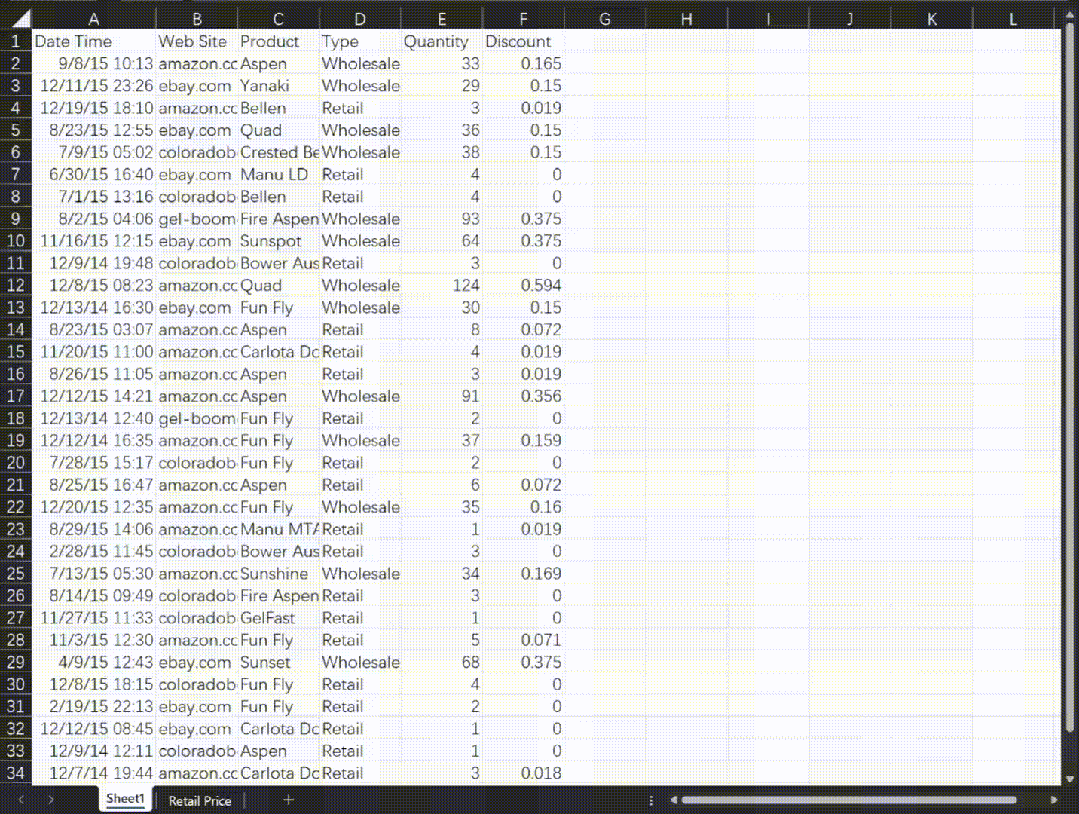
Sales data analysis
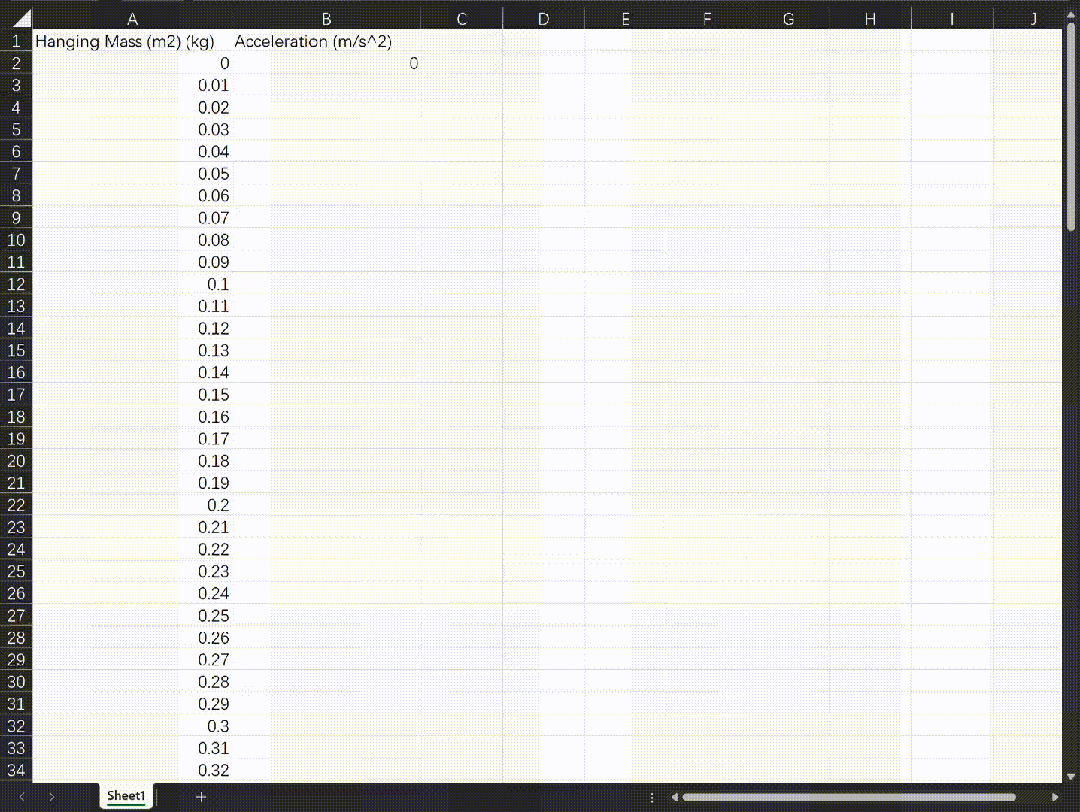
Experimental chart drawing
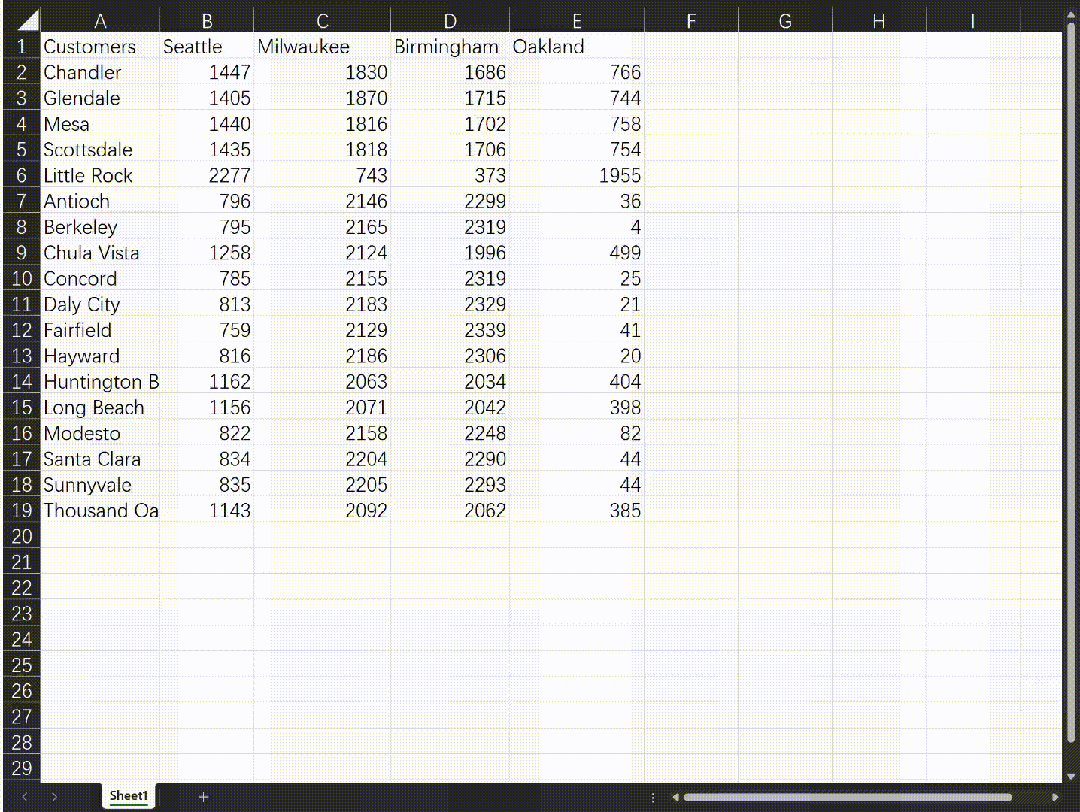
##Complex formula calculation
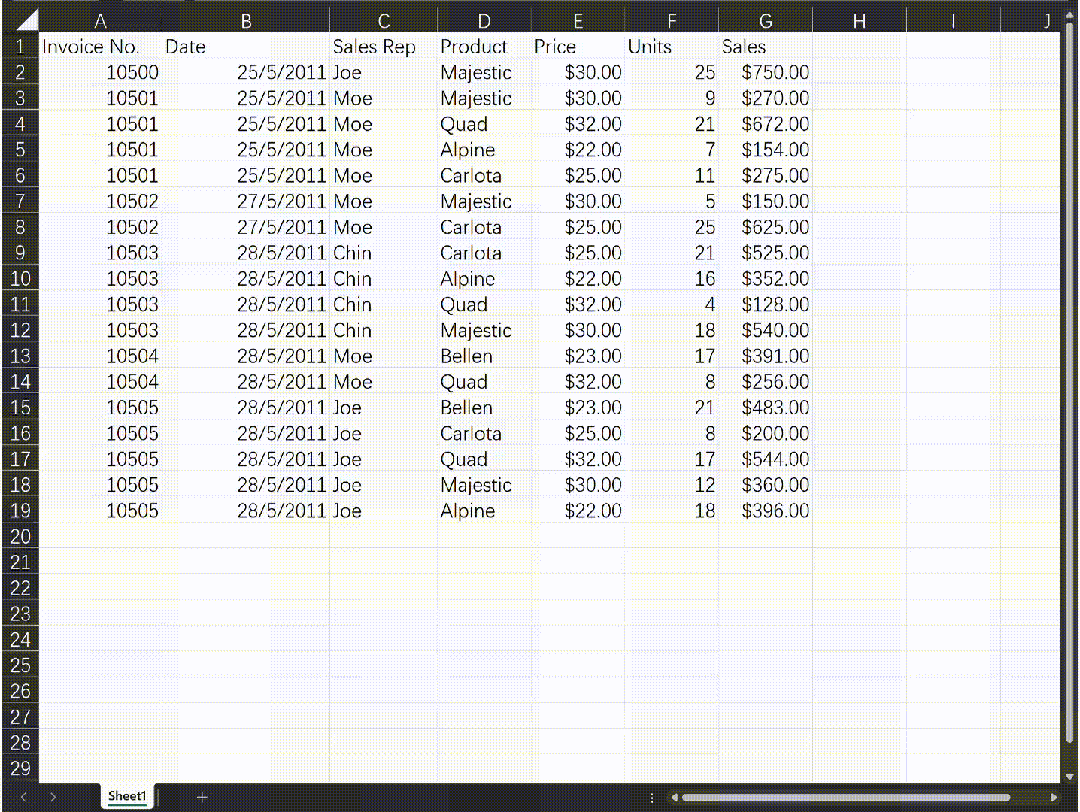
##Applying Conditional Formatting
2. Beyond the VBA-based approach
SheetCopilot is superior to the method of using GPT-3.5 to generate VBA code and execute it. The generated solution is significantly better than the latter (see the figure below), which makes SheetCopilot expected to become a powerful AI auxiliary tool for data processing personnel in the future. .


Left picture: lengthy VBA code; right picture: SheetCopilot simple and easy to understand solution plan.
3. Comfortable using experience
SheetCopilot in When the network connection is stable, it only takes about 10 steps of multi-table combination operations to quickly complete the task in tables with thousands of rows and dozens of columns. This not only frees up the user's tired eyes, but also saves the time wasted in finding the website and trying the steps one by one, and also avoids the cost of learning VBA.
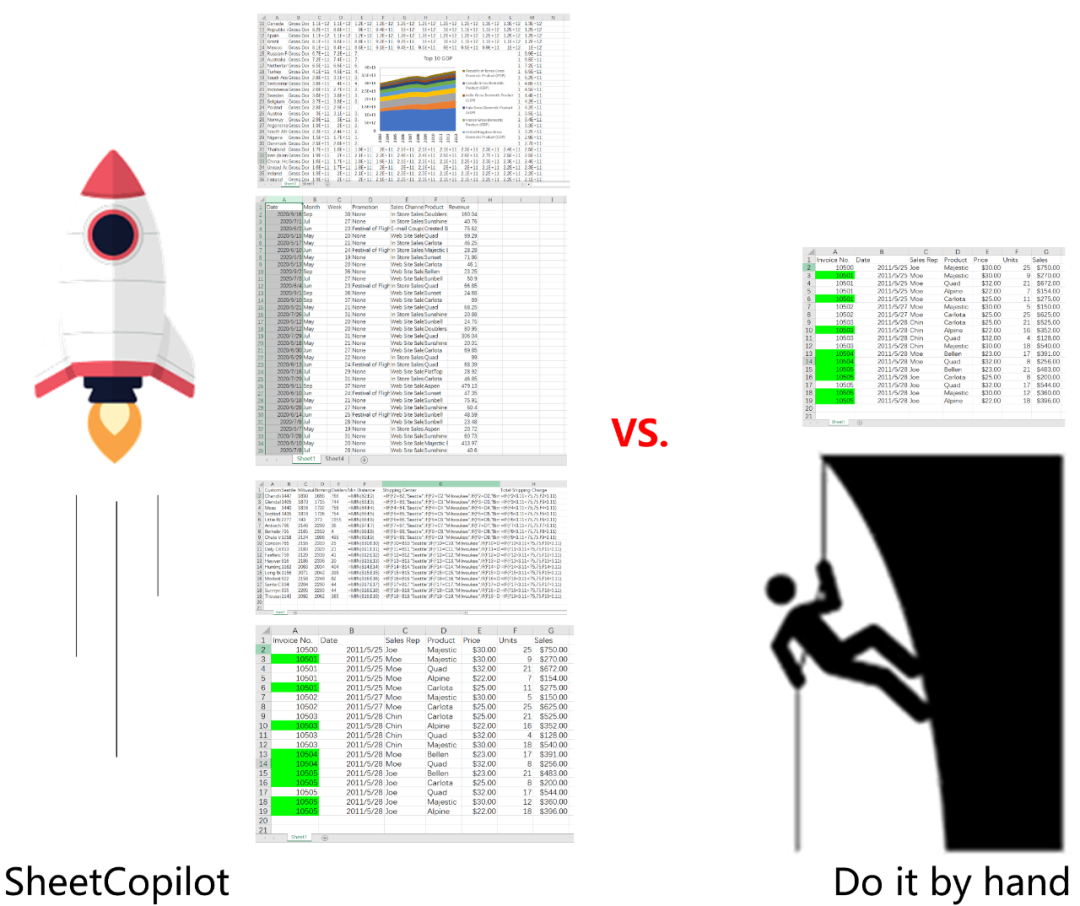
Method Principle
This article abstracts the core functions required for table manipulation into a set of virtual APIs (called atomic operations, see the figure below), which are used to generate solutions as LLM A bridge for interaction with application software.
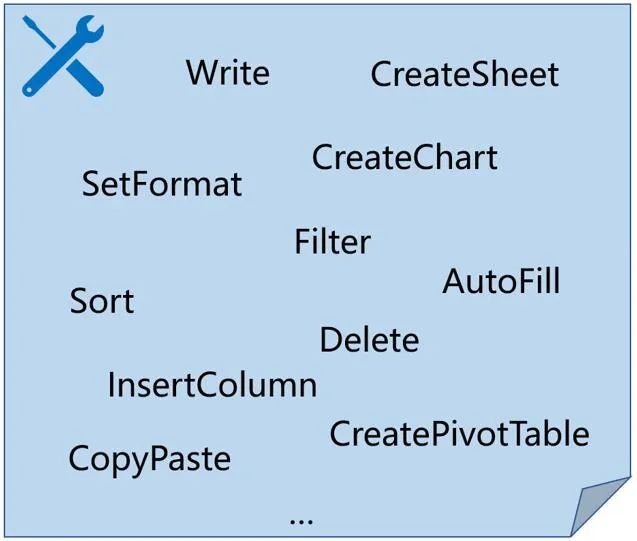
The simplest method is to generate all steps of a task in one query of LLM. However, as the complexity of the task increases, subsequent steps become more dependent on the execution results of previous steps, making it difficult for this kind of open-loop control to obtain correct results. For example, LLM has difficulty determining the scope of an operation if it cannot determine where the data will be visible after filtering.
In order to achieve efficient closed-loop control, SheetCopilot optimizes solutions based on software status feedback and external atomic operation knowledge base, improving success rate and efficiency.
How to evaluate
This article proposes a high-quality evaluation benchmark. The tasks of this benchmark have diverse formulations and involve rich atomic operations, as shown in the following word cloud:

This benchmark adopts the following Metrics about success rate (higher is better):
- Exec@1: Execution success rate of the generated task solution.
- Pass@1: Task pass rate, that is, the proportion of solutions that can match any reference answer after execution.
This benchmark also considers the following efficiency metrics (lower is better):
- A50: Will meet mission requirements The number of steps in the solution is divided by the minimum number of steps in the reference answer, and then the median of all calculations is taken.
- A90: The calculation method is the same as above, but the 90th percentile of all calculation results is taken. This indicator reflects the extreme value distribution of the number of actions.
Experimental results
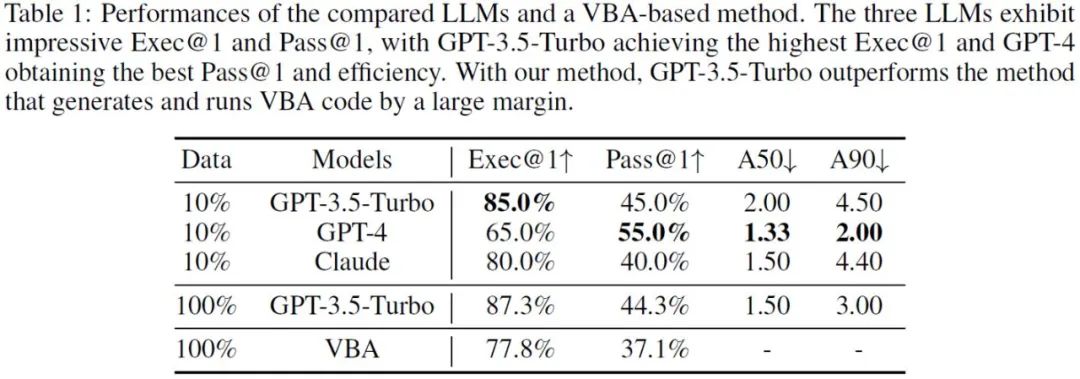
##Table 1: Comparison on SheetCopilot data set GPT-3.5-Turbo, GPT-4, Claude and how to generate VBA.
Unsurprisingly, GPT-4 has the highest proportion of solutions that meet the task requirements and has the best efficiency, while GPT-3.5-Turbo follows closely behind, with Claude winning the most. times but also close to GPT-3.5-Turbo.
One noteworthy result is that SheetCopilot achieved an excellent success rate compared to the method of translating user instructions into VBA code and executing them on Excel. This means that SheetCopilot brings software intelligent control a big step closer to us, allowing users who cannot program to command computers to complete complex tasks through daily communication.
Let’s take a look at the advantages and disadvantages of each of these three LLMs through the indicators in each subdivision category below.
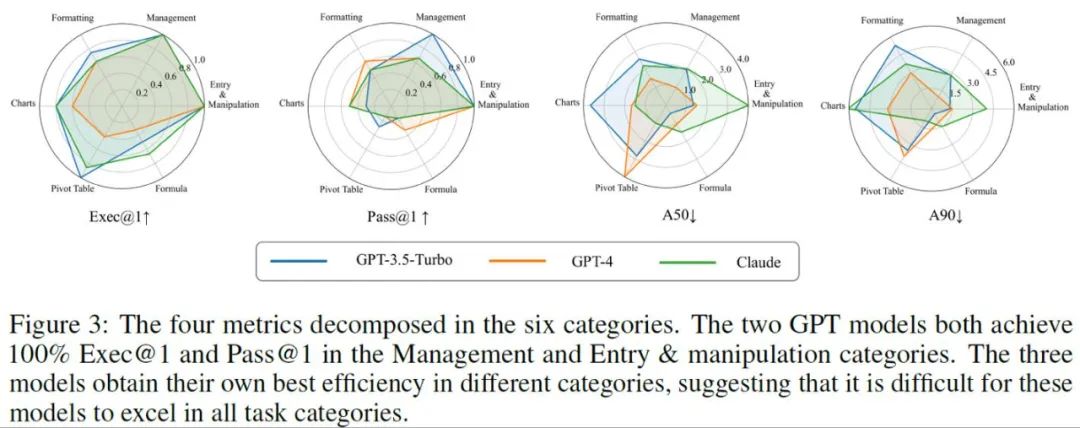
GPT-3.5 and GPT-4 easily solve Management (table management operations such as sorting and filtering) and Entry & manipulation (data input and manipulation) tasks, both achieved 100% executability rate. In addition, the three LLMs each showed the best efficiency in different task categories. This interesting finding shows that each LLM has its unique advantages and that GPT-4 cannot outperform other models.
ConclusionSheetCopilot uses LLM to successfully form a closed loop of perception, reasoning and decision-making through text interfaces to achieve efficient spreadsheet control and promote smarter software control. Going to the next level also brings new inspiration to researchers interested in generalist agents.
The above is the detailed content of Manage demands and use large models to solve problems: the chart processing artifact SheetCopilot is online. For more information, please follow other related articles on the PHP Chinese website!

Hot AI Tools

Undresser.AI Undress
AI-powered app for creating realistic nude photos

AI Clothes Remover
Online AI tool for removing clothes from photos.

Undress AI Tool
Undress images for free

Clothoff.io
AI clothes remover

Video Face Swap
Swap faces in any video effortlessly with our completely free AI face swap tool!

Hot Article

Hot Tools

Notepad++7.3.1
Easy-to-use and free code editor

SublimeText3 Chinese version
Chinese version, very easy to use

Zend Studio 13.0.1
Powerful PHP integrated development environment

Dreamweaver CS6
Visual web development tools

SublimeText3 Mac version
God-level code editing software (SublimeText3)

Hot Topics
 The world's most powerful open source MoE model is here, with Chinese capabilities comparable to GPT-4, and the price is only nearly one percent of GPT-4-Turbo
May 07, 2024 pm 04:13 PM
The world's most powerful open source MoE model is here, with Chinese capabilities comparable to GPT-4, and the price is only nearly one percent of GPT-4-Turbo
May 07, 2024 pm 04:13 PM
Imagine an artificial intelligence model that not only has the ability to surpass traditional computing, but also achieves more efficient performance at a lower cost. This is not science fiction, DeepSeek-V2[1], the world’s most powerful open source MoE model is here. DeepSeek-V2 is a powerful mixture of experts (MoE) language model with the characteristics of economical training and efficient inference. It consists of 236B parameters, 21B of which are used to activate each marker. Compared with DeepSeek67B, DeepSeek-V2 has stronger performance, while saving 42.5% of training costs, reducing KV cache by 93.3%, and increasing the maximum generation throughput to 5.76 times. DeepSeek is a company exploring general artificial intelligence
 AI subverts mathematical research! Fields Medal winner and Chinese-American mathematician led 11 top-ranked papers | Liked by Terence Tao
Apr 09, 2024 am 11:52 AM
AI subverts mathematical research! Fields Medal winner and Chinese-American mathematician led 11 top-ranked papers | Liked by Terence Tao
Apr 09, 2024 am 11:52 AM
AI is indeed changing mathematics. Recently, Tao Zhexuan, who has been paying close attention to this issue, forwarded the latest issue of "Bulletin of the American Mathematical Society" (Bulletin of the American Mathematical Society). Focusing on the topic "Will machines change mathematics?", many mathematicians expressed their opinions. The whole process was full of sparks, hardcore and exciting. The author has a strong lineup, including Fields Medal winner Akshay Venkatesh, Chinese mathematician Zheng Lejun, NYU computer scientist Ernest Davis and many other well-known scholars in the industry. The world of AI has changed dramatically. You know, many of these articles were submitted a year ago.
 Google is ecstatic: JAX performance surpasses Pytorch and TensorFlow! It may become the fastest choice for GPU inference training
Apr 01, 2024 pm 07:46 PM
Google is ecstatic: JAX performance surpasses Pytorch and TensorFlow! It may become the fastest choice for GPU inference training
Apr 01, 2024 pm 07:46 PM
The performance of JAX, promoted by Google, has surpassed that of Pytorch and TensorFlow in recent benchmark tests, ranking first in 7 indicators. And the test was not done on the TPU with the best JAX performance. Although among developers, Pytorch is still more popular than Tensorflow. But in the future, perhaps more large models will be trained and run based on the JAX platform. Models Recently, the Keras team benchmarked three backends (TensorFlow, JAX, PyTorch) with the native PyTorch implementation and Keras2 with TensorFlow. First, they select a set of mainstream
 Hello, electric Atlas! Boston Dynamics robot comes back to life, 180-degree weird moves scare Musk
Apr 18, 2024 pm 07:58 PM
Hello, electric Atlas! Boston Dynamics robot comes back to life, 180-degree weird moves scare Musk
Apr 18, 2024 pm 07:58 PM
Boston Dynamics Atlas officially enters the era of electric robots! Yesterday, the hydraulic Atlas just "tearfully" withdrew from the stage of history. Today, Boston Dynamics announced that the electric Atlas is on the job. It seems that in the field of commercial humanoid robots, Boston Dynamics is determined to compete with Tesla. After the new video was released, it had already been viewed by more than one million people in just ten hours. The old people leave and new roles appear. This is a historical necessity. There is no doubt that this year is the explosive year of humanoid robots. Netizens commented: The advancement of robots has made this year's opening ceremony look like a human, and the degree of freedom is far greater than that of humans. But is this really not a horror movie? At the beginning of the video, Atlas is lying calmly on the ground, seemingly on his back. What follows is jaw-dropping
 KAN, which replaces MLP, has been extended to convolution by open source projects
Jun 01, 2024 pm 10:03 PM
KAN, which replaces MLP, has been extended to convolution by open source projects
Jun 01, 2024 pm 10:03 PM
Earlier this month, researchers from MIT and other institutions proposed a very promising alternative to MLP - KAN. KAN outperforms MLP in terms of accuracy and interpretability. And it can outperform MLP running with a larger number of parameters with a very small number of parameters. For example, the authors stated that they used KAN to reproduce DeepMind's results with a smaller network and a higher degree of automation. Specifically, DeepMind's MLP has about 300,000 parameters, while KAN only has about 200 parameters. KAN has a strong mathematical foundation like MLP. MLP is based on the universal approximation theorem, while KAN is based on the Kolmogorov-Arnold representation theorem. As shown in the figure below, KAN has
 Tesla robots work in factories, Musk: The degree of freedom of hands will reach 22 this year!
May 06, 2024 pm 04:13 PM
Tesla robots work in factories, Musk: The degree of freedom of hands will reach 22 this year!
May 06, 2024 pm 04:13 PM
The latest video of Tesla's robot Optimus is released, and it can already work in the factory. At normal speed, it sorts batteries (Tesla's 4680 batteries) like this: The official also released what it looks like at 20x speed - on a small "workstation", picking and picking and picking: This time it is released One of the highlights of the video is that Optimus completes this work in the factory, completely autonomously, without human intervention throughout the process. And from the perspective of Optimus, it can also pick up and place the crooked battery, focusing on automatic error correction: Regarding Optimus's hand, NVIDIA scientist Jim Fan gave a high evaluation: Optimus's hand is the world's five-fingered robot. One of the most dexterous. Its hands are not only tactile
 FisheyeDetNet: the first target detection algorithm based on fisheye camera
Apr 26, 2024 am 11:37 AM
FisheyeDetNet: the first target detection algorithm based on fisheye camera
Apr 26, 2024 am 11:37 AM
Target detection is a relatively mature problem in autonomous driving systems, among which pedestrian detection is one of the earliest algorithms to be deployed. Very comprehensive research has been carried out in most papers. However, distance perception using fisheye cameras for surround view is relatively less studied. Due to large radial distortion, standard bounding box representation is difficult to implement in fisheye cameras. To alleviate the above description, we explore extended bounding box, ellipse, and general polygon designs into polar/angular representations and define an instance segmentation mIOU metric to analyze these representations. The proposed model fisheyeDetNet with polygonal shape outperforms other models and simultaneously achieves 49.5% mAP on the Valeo fisheye camera dataset for autonomous driving
 The latest from Oxford University! Mickey: 2D image matching in 3D SOTA! (CVPR\'24)
Apr 23, 2024 pm 01:20 PM
The latest from Oxford University! Mickey: 2D image matching in 3D SOTA! (CVPR\'24)
Apr 23, 2024 pm 01:20 PM
Project link written in front: https://nianticlabs.github.io/mickey/ Given two pictures, the camera pose between them can be estimated by establishing the correspondence between the pictures. Typically, these correspondences are 2D to 2D, and our estimated poses are scale-indeterminate. Some applications, such as instant augmented reality anytime, anywhere, require pose estimation of scale metrics, so they rely on external depth estimators to recover scale. This paper proposes MicKey, a keypoint matching process capable of predicting metric correspondences in 3D camera space. By learning 3D coordinate matching across images, we are able to infer metric relative





